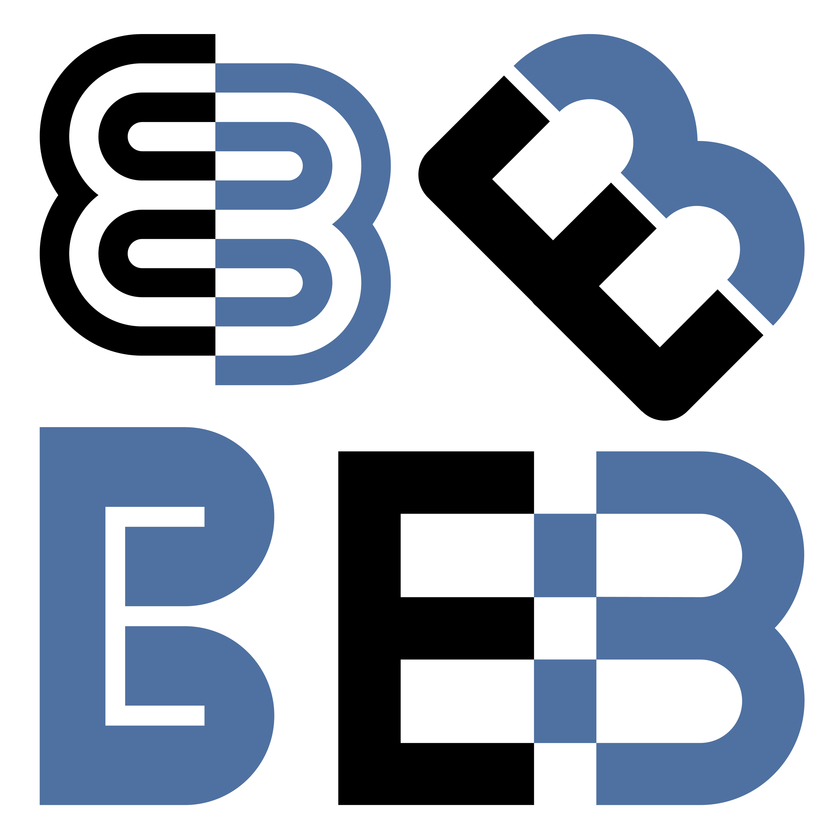 Designing Logos is no easy task, that’s why there are so many well-paid professionals, and a great deal many more not-so-well-paid, but nonetheless legitimate, experts in the field of logo design doing the work for others. The industry is riddled with sometimes contradictory doctrines, rules, do’s and don’ts, schools of thought and best practices which can often overload beginners to the point where they don’t even know where to start. But there is a start; it’s called the beginning, and there is a golden rule: it’s called balance.
Designing Logos is no easy task, that’s why there are so many well-paid professionals, and a great deal many more not-so-well-paid, but nonetheless legitimate, experts in the field of logo design doing the work for others. The industry is riddled with sometimes contradictory doctrines, rules, do’s and don’ts, schools of thought and best practices which can often overload beginners to the point where they don’t even know where to start. But there is a start; it’s called the beginning, and there is a golden rule: it’s called balance.
In the beginning, there was research. Anyone who is really serious about making a spiffy logo for a new or established company has to invest a reasonable amount of time doing research, and they should also give themselves the necessary space and time to ponder what they’re going to do before engaging in any actual design work. Effective research should include in-depth investigation of the company, and some self-training in the aesthetic aspects of logo design.
The idea of researching a company could come across as somewhat odd to a prospective designer wishing to make a logo for his or her own company, but even in these simplest of cases, a little objective analysis is always time well spent. A designer who is very close to the company needs to take a step back and consider the company’s profile in relation to its market:
• How does it compete?
• What does it do well?
• How does it compare with the competition?
• What is the profile of a typical customer?
• What do they look for most in your product or service?
• What do they do in their free time?
These, and many more questions like these, need answering before attempting to build a new, unique logo. It’s important to always bear in mind that a good logo has very little to do with appealing to the proprietors, and very much to do with looking good to customers.
This brings us to aesthetics. It is not difficult to get an idea of the current trends in contemporary logo design, and neither should being able to access galleries of chic new designs pose any hindrance. Some of the fundamental aspects of logo design that a newcomer should be focusing on are:
• Text fonts—or typeface styles are very important. Modern renditions seem to tend towards simpler, more uniform styles without serifs or swirls. When considering the typeface, a logo designer should also decide whether or not the text alone might be the logo. Smaller, symmetrical words often lend themselves to this solution.
• Images—this is a very difficult choice. Images can range from a tree stencils to forests, from simple geometrical forms to complex patterns or even optical illusions. Careful consideration should be given to how images will look when rendered in lower density graphics, or print form, including photocopies.
• Colors—the use of colours is also an important choice. The designer should think about what happens to the image when it is photocopied in black and white or rendered in grey scale.
• Backgrounds—image backgrounds and negative space (where a new image appears in the area not touched by the actual image) can add extra dimensions to the logo and can, at times, be quite clever indeed.
• Overall size and shape—the area occupied by the logo needs to be considered along with the area around the logo in which no other content may be placed. Consideration should be given to how these areas will appear on websites and letterheads.
Whatever style logo the designer opts for in the end, the basic tenet of balance should always accompany his or her decisions. This is not so much to do with symmetry, which is in itself another powerful instrument in logo design, but using good taste: not exaggerating or overcrowding, not being too loud, too bold or ostentatious; in short, stay away from kitsch and go for an elegant design that will still be easy on the eye a few years down the track.
Richard McMunn, runs the leading career website How2Become. His aim is to help as many people as possible pass the recruitment process they are applying for to secure the job they have always wanted. The site offers a wide range of books and training courses for those who want to ensure they are fully prepared. You can also connect with How2become on YouTube
